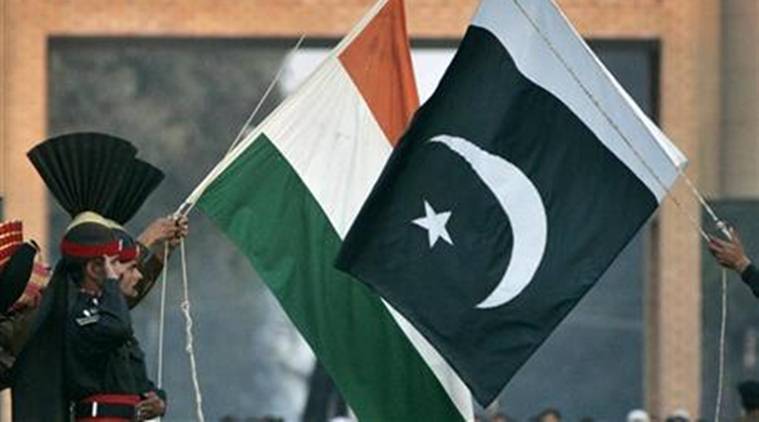
It was a winter morning in late December 2001 when India decided to mobilise its forces on its border with Pakistan in retaliation against the terror attack on the Indian Parliament on December 13. Meant to pressure the seemingly recalcitrant neighbour, it was the biggest troop deployment since the war of 1971. However, no lines were crossed due to foreign intervention and a realisation around the world that a conflict between the two South Asian neighbours who had gone overtly nuclear in 1998 might result in something very ugly. It was in the backdrop of this standoff, or the earlier Kargil crisis, that red lines were drawn informally.
Sixteen years later, in case a similar situation arose, it would not have the same advantage of clarity over the threshold. There is even less lucidity regarding which international player might intervene. Unlike in the past, the US may not be in a position to give its advice due to its own internal chaos, lowered levels of interest in South Asia and inability to develop a relationship with anyone in Islamabad. Although deterrence and an understanding of each other’s thresholds worked for almost a decade after 2002, both sides worked towards finding the means to challenge the status quo. So, India’s “cold start” doctrine was meant for Delhi to circumvent the four red lines highlighted by the head of Pakistan’s Strategic Plans Division (SPD), Lt. General Khalid Kidwai. Pakistan reacted to India’s plan by developing a range of battlefield tactical nuclear weapons.
Since 2013/2014 all lines have become muddled and the military-strategic visibility has become poorer as both sides of the border enjoy a certain level of confidence that any initiative will be to their advantage and not to the adversary’s.
While Narendra Modi and his party’s political position is unquestionable, the military in Pakistan has managed to cobble together popular opinion regarding its role as defender of the territorial and ideological integrity of the state. Voices that question the narrative no longer have centre-stage in public discourse. Not to forget the tremendous confidence gained by Islamabad through finding space in the evolving regional political map as China’s partner.
This description of similar levels of confidence enjoyed by the two states tends to point towards an increased threat of war and conflict. Historically, every time both India and Pakistan attained a higher degree of self-confidence at the same time the results were not good. These are indeed interesting times when military thresholds are being challenged and re-checked in a nuclear environment. Given the absence of direct conversation, there is also little clarity as to how far the two sides will go. The Pakistan Army has stated that it is not involved in mutilating bodies of Indian soldiers. But even if it is random militants or someone else, the question is finding a possibility for talks before things go too far and out of hand.
Another interesting development in the past decade or more pertains to war and conflict becoming matters in which popular opinion has begun to weigh in. While this may be a deliberate formula of the states, the issue is that media hype around war and peace has acquired a life of its own. But this means that any escalation will render results in greater public support to their respective armed forces. The recipe is dangerous especially if India tries to go beyond its claims of a surgical strike in September 2016. The fact that Pakistan did not react or admit to such strikes having happened kept things from boiling over. However, if India intended to make its response more visible, it could result in serious repercussions for the entire region. Strategic analysts have often talked about the rationality of Pakistan’s armed forces that, it is believed, may force it to not up the ante and cap it at a lower level. But what if it does not follow this script?
It is beyond doubt that this is one time when the two states need to engage in a dialogue through reliable interlocutors. Understandably, Pakistan must solve its internal confusion of civil and military
being on separate pages as far as policy on India is concerned. In fact, the business tycoon Sajjan Jindal’s visit to meet Nawaz Sharif did not benefit the prime minister. If anything, the narrative popularised through the media presented him as suspicious and unreliable. From a common sense perspective, this is not the best of conditions that a country ought to find itself in especially when confronted with a grave situation.
However, the military believes it can protect the territory and the core strategic understanding that there can be no peace with the bigger neighbour unless outstanding disputes are resolved. It would certainly not allow a political leadership to push a solution without taking key stakeholders on board. The civil-military squabble tends to hide the difference of opinion that exists within the military regarding how far negotiations between Islamabad and New Delhi should go. While some may support the idea of negotiations, there are those who would like to go the whole hog in de-Indianising their society and culture.
Unfortunately for South Asia, peace and camaraderie amongst the people is the biggest collateral damage of the present environment. The talk of action-reaction and hostility is increasingly de-sensitising people towards the idea of peaceful co-existence or the building of a shared culture of the soil. Any further increase in hostility is likely to make common people even wearier. While the militaries brace themselves for greater conflict, the leadership ought to find ways to talk. It is important to realise that talking is imperative.




